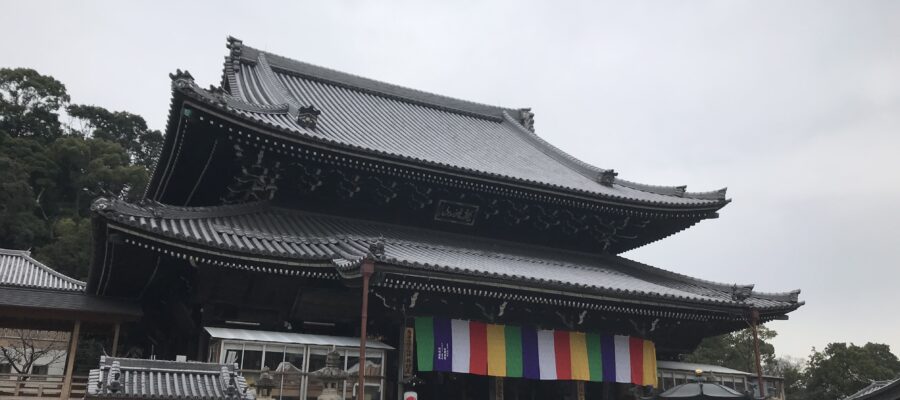のどかな大阪南部
だんじり祭りで有名な大阪南部の岸和田から南海電鉄の急行でさらに南に1ストップ乗りますと、貝塚駅に着きます。そこから支線のような水間電鉄というローカル線が出ていて、終着駅が水間観音駅です。
のどかなローカル線を下り、のんびりした道を進みますとアーチ状の石橋の手前に大きな灯篭が見えます。脇には寺名を刻んだ石碑があり、お寺に到着です。この厄除橋から正面やや右に三重塔が見えます。
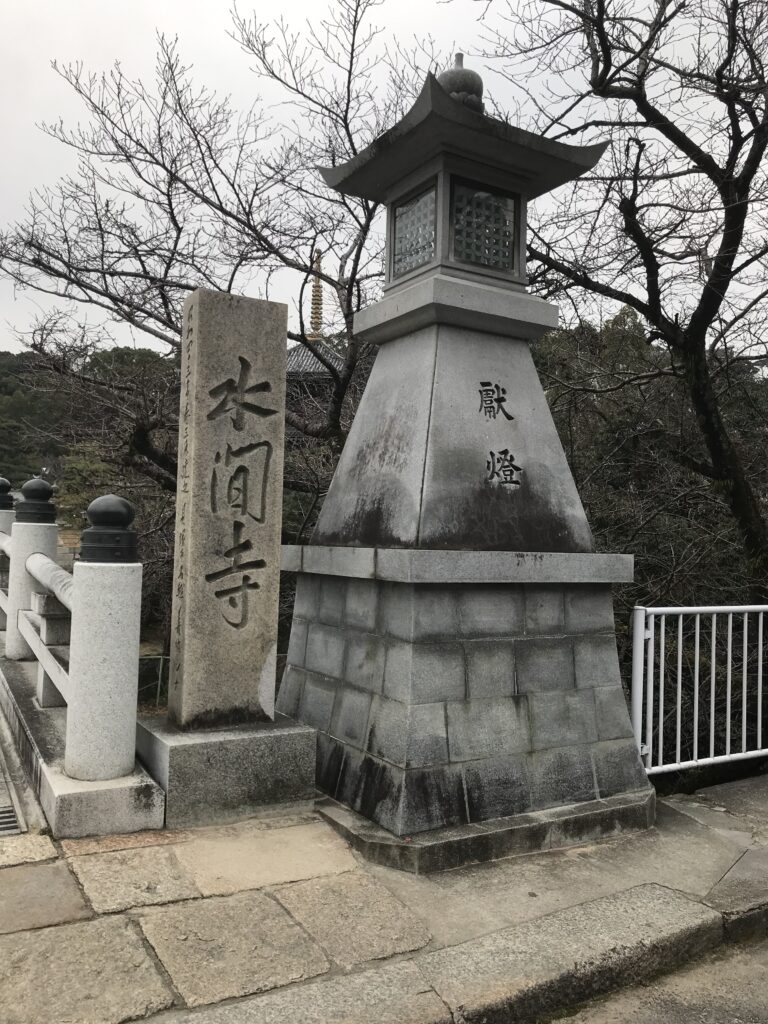
聖武天皇の夢のお告げ
このお寺は奈良時代に聖武天皇の勅願によって、行基菩薩が開創されたそうで、御本尊は、一寸八分(約6cm)の聖観音菩薩です。聖武天皇が病気の時、観音様が出現するとの夢のお告げがあり、行基菩薩がその聖観音像を手に入れた地にお堂を建立したのが始まりと伝わります。
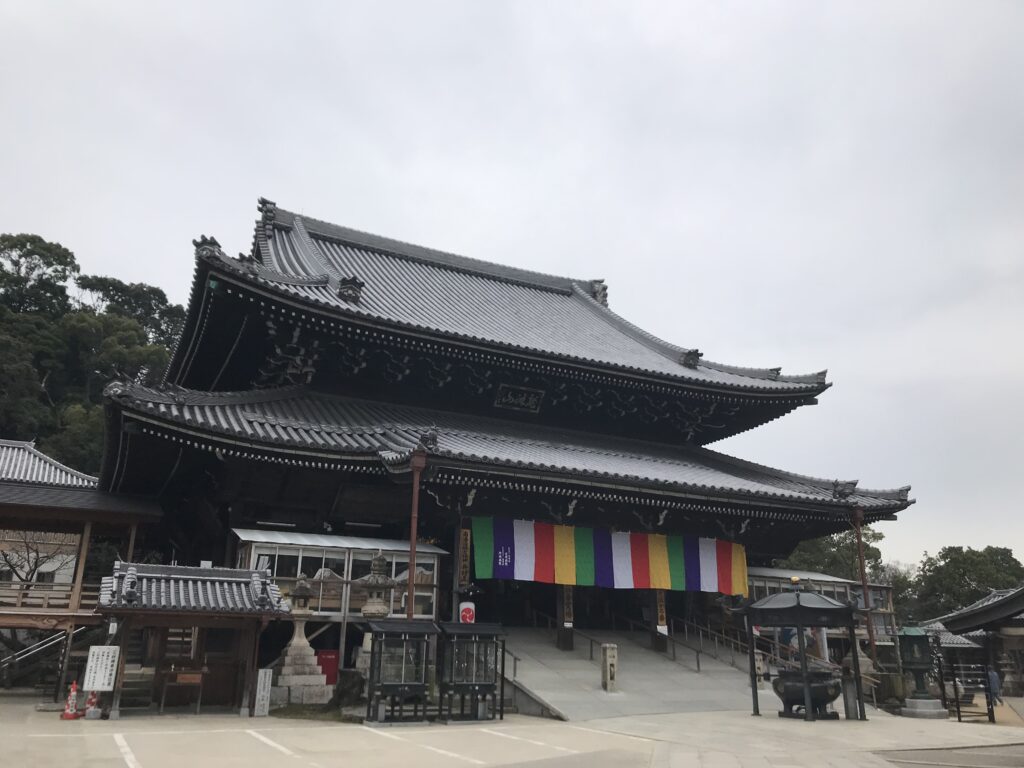
厄除観音
創建以来、秀吉の根来攻めなどの戦乱や数々の天災・苦難を乗り越えてきたお寺ですので、庶民からは厄除観音として広く親しまれています。写真を紛失したのですが、このお寺でシンボル的な存在は三重塔です。井原西鶴の「日本永代蔵」に出てくる三重塔のモデルとも言われています。
ただ、私が気になったのは、古びた大黒様?の石造です。黒ずんでいるので周りの樹木に埋もれているのですが、こちらをユーモラスな表情で微笑んでくれています。和歌山出張帰りのわずかな時間でしたが、ホッコリした気持ちになりました。(完)
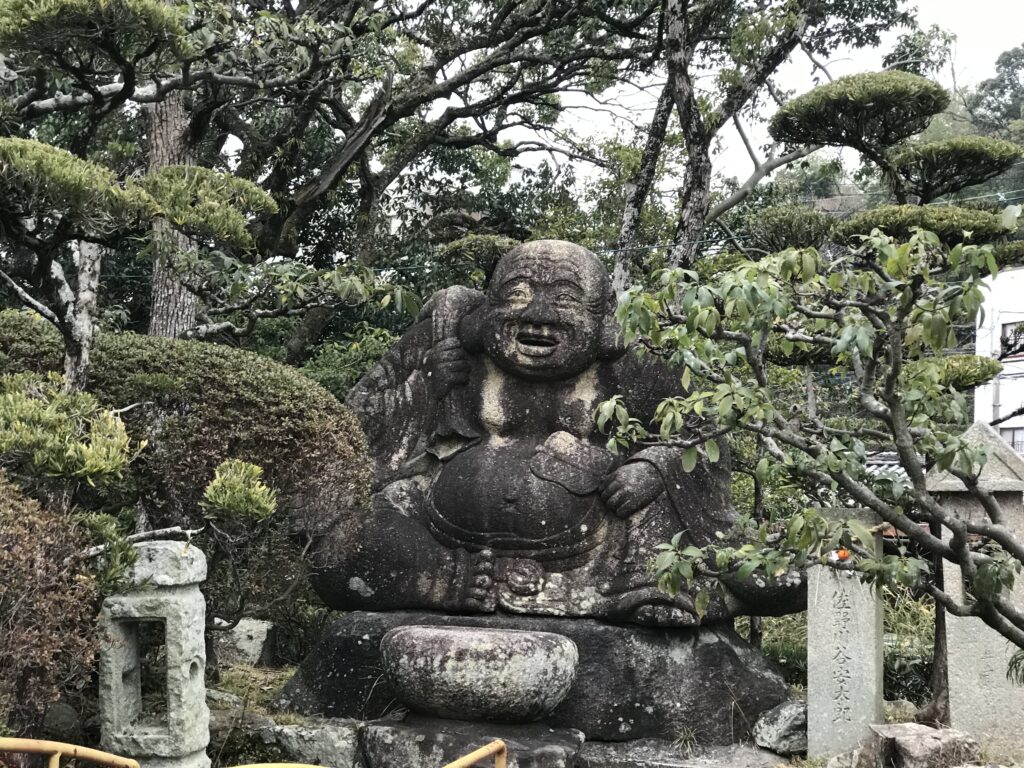
水間寺の御朱印
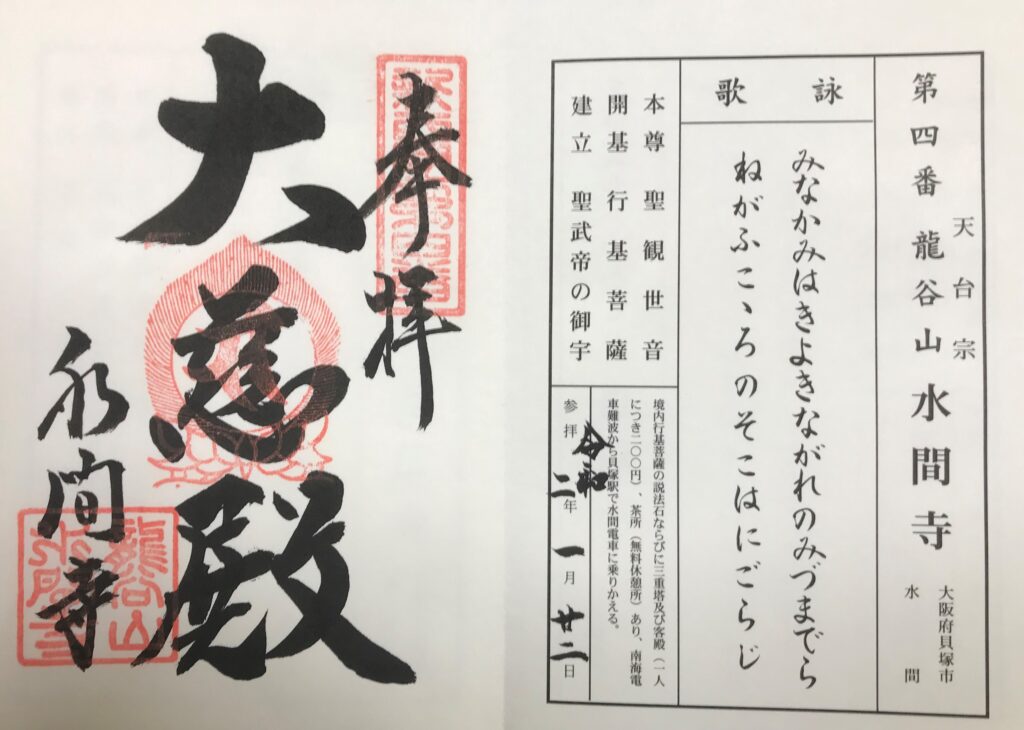
大阪南部のおみやげ
大阪の南部、泉州といえば「水なす」の産地。旬な季節に、たっぷりと味わってみてください。
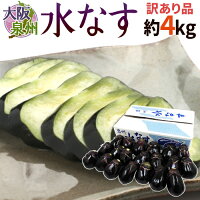
大阪泉州 ”水なす” 風袋込約4kg 訳あり ご家庭用【予約 3月以降】 送料無料
価格:3,580円
(2022/1/29 14:11時点)
感想(71件)
Mizuma Temple (Osaka)
Tranquil Southern Osaka
From Kishiwada in the southern part of Osaka, famous for the Danjiri Festival, you can take the Nankai Electric Railway express train one stop further south to Kaizuka Station. From there, there is a local line called Mizuma Dentetsu, which is like a branch line, and the terminal station is Mizuma-Kannon Station.
After descending the tranquil local train line, you will see a large lantern in front of an arched stone bridge with a stone monument inscribed with the name of the temple beside it. From the bridge, you can see the three-story pagoda on the right.
Emperor Shomu’s Dream Sign
The temple was founded in the Nara period (710-794) by Gyoki Bosatsu at the request of Emperor Shomu, and the main image is the 1″-8″ (about 6cm) statue of the Holy Kannon. It is said that when Emperor Shomu was ill, he had a dream that the Kannon would appear to him, and Gyoki built a hall on the site where he obtained the statue of the Holy Kannon. This hall is the origin of this temple.
Avalokitesvara (bodhisattva of mercy and salvation)
Since its foundation, the temple has survived many natural disasters and hardships, as well as warfare, such as Hideyoshi’s attack on Negoro, and is widely known by the common people as the Kannon, the Goddess of Mercy. I lost the photo, but the three-storied pagoda is a symbol of this temple. It is said to be the model for the three-storied pagoda that appears in the novel “Nihon Eitaigura” by Saikaku Ihara.
The only thing that attracted my attention was the old Daikoku-sama’s stone structure. It is blackened and buried in the surrounding trees, but it is smiling at us with a humorous expression. It was only a short time on my way back from a business trip to Wakayama, but it made me feel happy. (End)
Temple Mizuma (Osaka)
Le sud tranquille d’Osaka
Depuis Kishiwada, dans la partie sud d’Osaka, célèbre pour le festival Danjiri, vous pouvez prendre le train express de la Nankai Electric Railway un arrêt plus au sud jusqu’à la gare de Kaizuka. De là, il y a une ligne locale appelée Mizuma Dentetsu, qui est comme une ligne secondaire, et la station terminale est la station Mizuma-Kannon.
Après avoir descendu la paisible ligne de train local, vous verrez une grande lanterne devant un pont de pierre arqué avec, à côté, un monument de pierre portant le nom du temple. Depuis le pont, vous pouvez voir la pagode à trois étages sur la droite.
Le signe du rêve de l’empereur Shomu
Le temple a été fondé à l’époque de Nara (710-794) par Gyoki Bosatsu à la demande de l’empereur Shomu, et l’image principale est la statue de 6 cm de la Sainte Kannon. On raconte que lorsque l’empereur Shomu était malade, il a rêvé que la Kannon lui apparaissait, et Gyoki a construit un hall sur le site où il a obtenu la statue de la Sainte Kannon. Ce hall est à l’origine de ce temple.
Avalokitesvara (bodhisattva de la miséricorde et du salut)
Depuis sa fondation, le temple a survécu à de nombreuses catastrophes naturelles et épreuves, ainsi qu’à des guerres, comme l’attaque de Hideyoshi sur Negoro, et est largement connu par les gens du peuple comme le Kannon, la déesse de la miséricorde. J’ai perdu la photo, mais la pagode à trois étages est un symbole de ce temple. On dit qu’elle est le modèle de la pagode à trois étages qui apparaît dans le roman “Nihon Eitaigura” de Saikaku Ihara.
La seule chose qui a attiré mon attention est la structure en pierre du vieux Daikoku-sama. Elle est noircie et enterrée dans les arbres environnants, mais elle nous sourit avec une expression humoristique. Ce n’était qu’un court moment sur mon chemin de retour d’un voyage d’affaires à Wakayama, mais cela m’a rendu heureux. (Fin)
